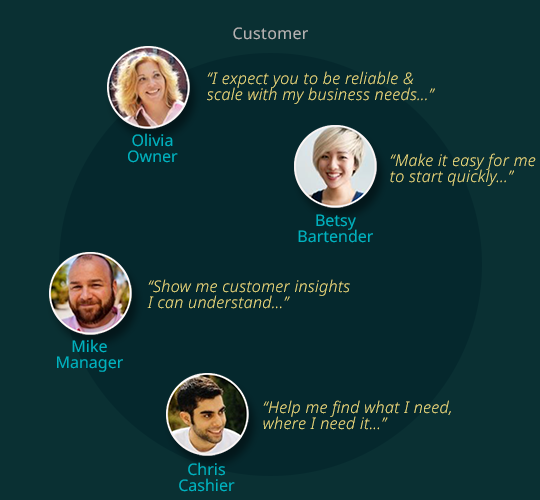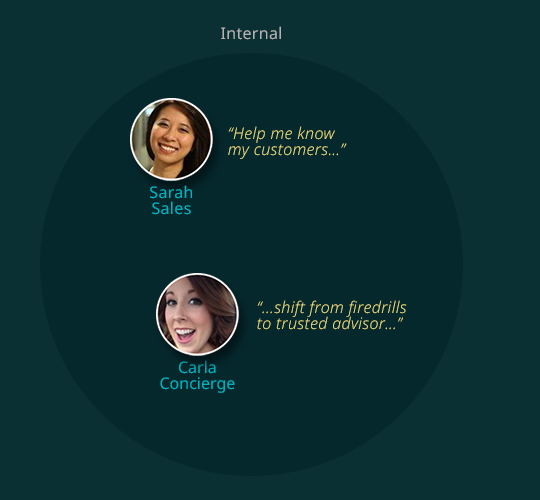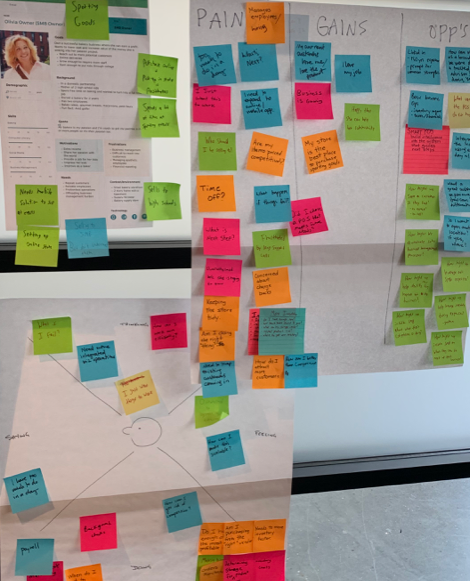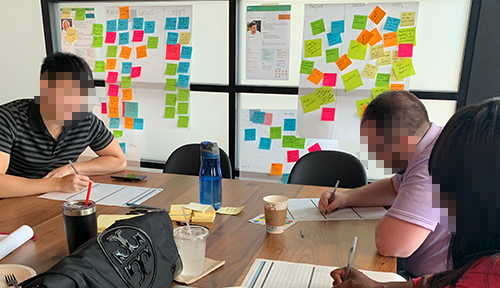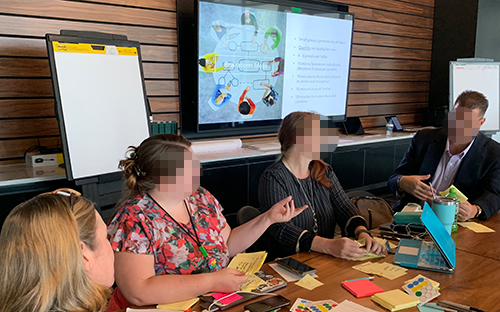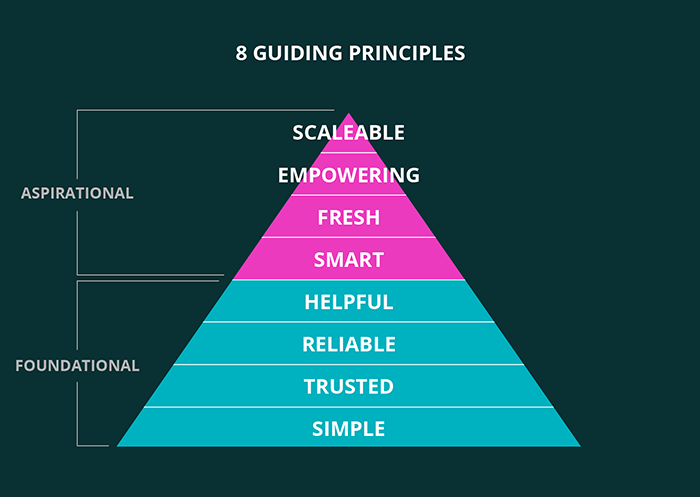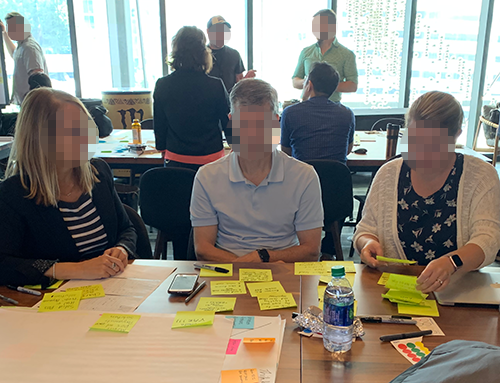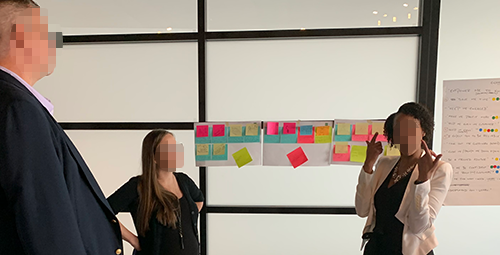Date
2019
Role
Design Thinking Facilitator
UX Lead
Service Design
Opportunity
With increases in competition, the current small business product reached a pivotal point requiring the team to redefine, innovate, and adjust the course. Facilitation of a design thinking workshop was the ideal recommendation to create momentum for aligning all stakeholders, share emerging research, and reimagine the end-to-end experience.
Weekly touchpoints were scheduled leading up to the workshop to identify a focused challenge, collect various research data points within customer support, market trends, competitive analysis and sales.
Empathy through Research and Personas
As a team, started to re-evaluate the product through the lens of current personas and develop empathy. This was completely new for many.
From multiple stakeholder perspectives & based on guiding principles, the team was able to perform activities to evaluate the current products, components, tools, partners & efforts in order to create focus, prioritize, and make the necessary changes.
Principles to Maintain Future Vision
It was increasingly important to establish a foundation for decision making and aspiring to a vision. This activity allowed for all team members to provide input on simple terms to describe what experience they must establish for their customers immediately, and which supports future growth.
The team was able to share their expertise with other stakeholders, and created experience themes which lead to guiding principles for product development & decision making, ideated on key challenges supporting project vision which combined foundational ideas with future thinking, and finally able to gain consensus on focus areas to move forward on.
Ideation, Experimentation, Validation
All team members were able to contribute their ideas to the future vision. The groups presented the ideas in a format that everyone could easily understand. Teams were able to receive peer feedback based on various discipline experiences.
Results
As part of the post work, ideas were prioritized using a Kano model template based on 2 criteria: impact to operational barriers and customer satisfaction. This helped create prioritization from immediate wins to long-term strategy. A roadmap was created that all stakeholders were vested in.
Through regular checkpoints, and aligned vision, teams were able to co-generate a shift in product development within just weeks versus several months historically. Next steps were to begin executing on priority use cases.


